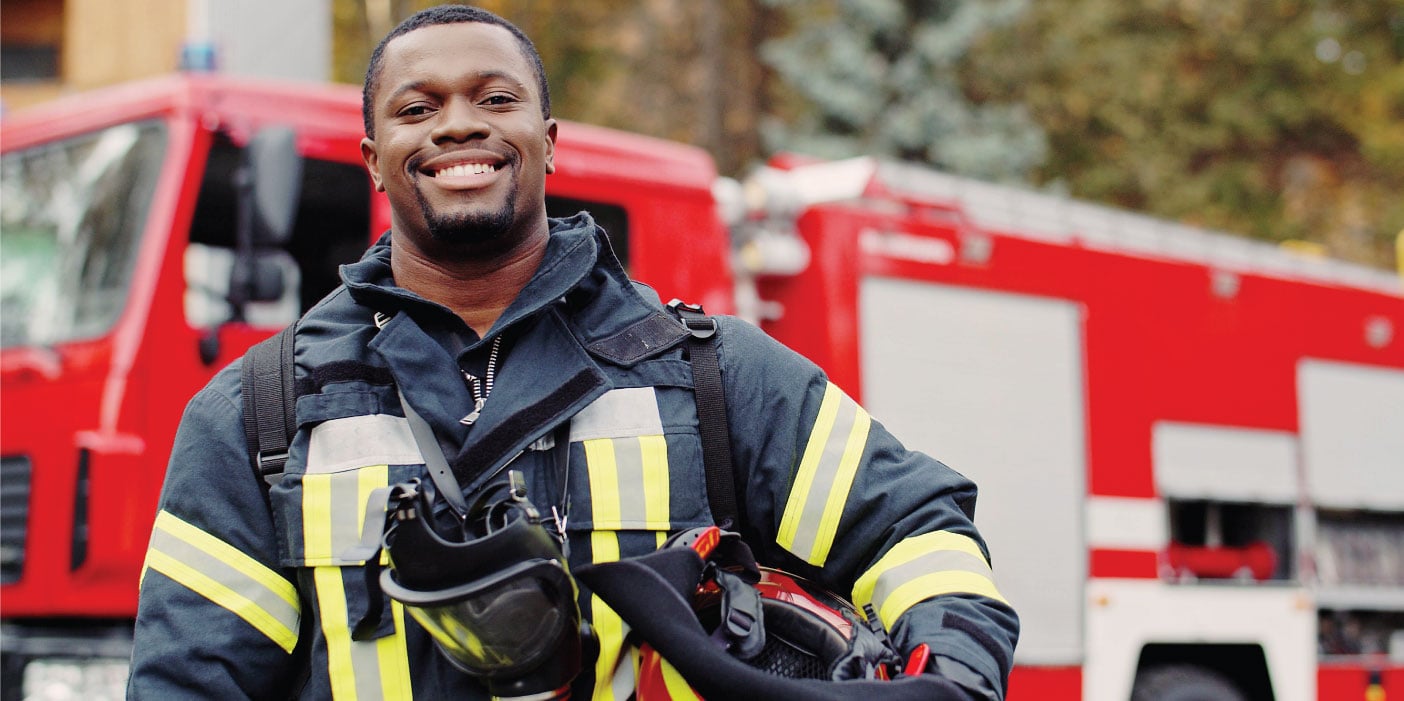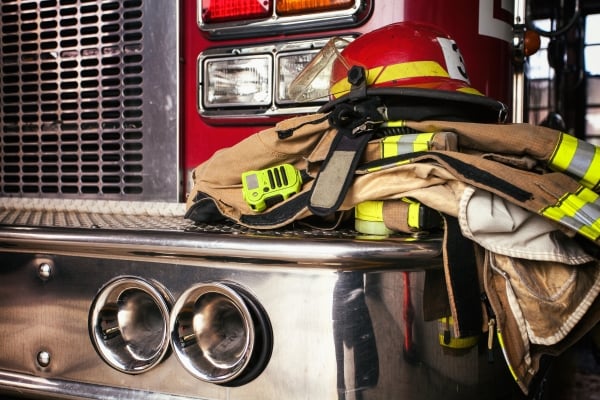The WSRB Guide to Community Ratings
Learn how the WSRB community evaluation process works and how it supports fire defense and building safety

Since 1911, WSRB has been supporting fire protection in Washington state. Today, we continue to produce fire protection data that helps insurance companies, insurance consumers, and communities.
This guide explains how we collect and produce data, what that data means, how it's used and how it helps. We provide an overview of our community evaluations and links to other articles, each focusing on a single topic in more depth. Note we only evaluate communities in Washington state. If you have questions about community ratings in other states, learn more here.
The purpose of our evaluations
We're an independent, not-for-profit organization operating in the public interest.
The data and information produced by our evaluations help:
- Insurance companies better understand property risk from fire and natural disasters.
- Insurance consumers feel confident their fire insurance premiums are fair.
- Communities understand how they can improve their fire-defense capabilities and building code effectiveness.
During an evaluation, we collect a variety of information and use it to produce two types of data: protection class (PC) and Building Code Effectiveness Grading Schedule (BCEGS®) classifications. The PC data describes a community's fire-defense capabilities, and the BCEGS data describes its building code effectiveness and enforcement practices.
Most insurance companies use our data to evaluate property risk. For those companies using our PC data, it is essential for setting fire insurance premiums.
Fire service professionals and other community officials participate in our evaluation process. They can use our data to identify ways to improve their fire-defense capabilities and build code effectiveness and enforcement.
Insurance consumers don't participate in the evaluation process, but our work helps give them confidence their property insurance premiums are set using fair, objective data.
Evaluating communities and determining PC and BCEGS classifications are not all we at WSRB do. Our entire organization is dedicated to producing accurate, unbiased data that helps reduce the loss of life and property in Washington state.

Protection class evaluations
The starting point for determining a community's PC is the evaluation process, which looks at four areas:
- Fire department, including distribution of stations, staffing levels, equipment, and personnel training.
- Water supply, including water flow capacity, fire hydrant location, and maintenance.
- Emergency communications system, including dispatching system, staffing, and training.
- Fire safety control, including fire code and building code enforcement, fire investigations, and public fire education programs.
We gather information on these topics from fire chiefs, fire marshals, water purveyors, emergency dispatch center managers, and other community officials. We look at these same four criteria in every evaluation, and we use a schedule with a points system to ensure consistency and fairness. However, this does not mean every evaluation is the same. In fact, each evaluation is unique to account for the characteristics of the individual community.
Before we conduct an evaluation
We contact the local fire chief to schedule our in-person visit. We're available then and at any time during the process to answer questions, and we're happy to help fire service professionals and community officials prepare for the evaluation so it goes as smoothly as possible.
The critical preparation steps are:
- Send us the records we request in advance, at least 30 days before our visit, and introduce us to local water purveyors and building code officials.
- Have maintenance records on equipment and apparatus ready when we visit. No need to send these in advance, but please have them ready on the day of the evaluation.
For more information about preparing for a PC evaluation, check out our blog post covering this topic in depth.
On the day of our in-person visit
We'll go to your community's fire station(s), ask questions and review records. We will also go to other local departments, such as fire marshal offices, emergency communications centers, and water departments. The exact nature of our visit will depend on the unique features of the community we're evaluating.
Go behind the scenes of a WSRB visit to a fire district in Snohomish County.
After our on-site visit
The fire protection analyst calculates the community's PC using the information collected. The team evaluating communities then works together to review the information collected and community features or circumstances relevant to the evaluation to finalize the updated PC. For example, a fire protection district may have expanded its staffing or added to its equipment inventory since our last evaluation. Even if the community hasn't changed much since our last visit, we carefully review our findings to confirm the accuracy of the updated PC.
Next, we communicate the findings to the fire chief. There are three potential outcomes of an evaluation: the community's PC improves, stays the same, or goes down.
- If there is an improvement or no change to the PC, we send the fire chief a summary letter and report describing our findings.
- If there is a negative change to the PC, we send the fire chief a letter describing why and offer the opportunity to address the change before we finalize the PC. Fire chiefs and their teams can prevent a negative PC change by, for example, setting up a plan to address the cause of the change. We hold the PC change in abeyance while the community implements the plan, and we re-evaluate once the plan is implemented.
We also offer post-evaluation consultations. We are happy to come to your community in person or set up a phone or video conference to answer questions.
For more about how we finalize the PC for a community and how we can help you prevent a negative PC change, click here.
After a community's protection class is determined
We use the community PC as a foundation to determine the PC for each building within that community. The two most important things to know about this process are:
- A community’s PC is the best PC an individual property within that community can have. If a property is in a community with a PC of 5, for example, the property could have a PC of 5 or worse (PC 6 to 10).
- A property’s PC is just one input insurance companies use to price fire coverage; other factors unrelated to a PC influence fire coverage pricing. Many inputs are used to determine the premium for an entire policy that covers losses unrelated to fire, such as theft, weather damage, and more.
The three specific factors we use in determining an individual property's PC are:
- The community PC.
- The distance to a recognized responding fire station.
- The distance to a standard fire hydrant.
To get the same PC as the community it is in, a building must be within a certain distance of a responding station and a standard hydrant. For buildings not meeting the distance-related criteria, the PC will be higher than the community's. In some cases, a building's PC may be very different than the community's.
Learn about how a specific property's PC is calculated. The good news is you don't need to memorize the rules or try to calculate a PC yourself. Registered users of WSRB can simply log in and look up any building address in Washington state. Property owners with questions about the PCs of their buildings can contact our customer service team at 206-217-0101, Monday through Friday, between 7:30 a.m. and 4 p.m.
Protection class changes
A community's PC could change after one of our evaluations, as described above.
An individual property's PC could change if:
- The community PC changes after one of our evaluations.
- The distribution of standard fire hydrants changes.
- The status of the nearest responding fire station changes.
For example, if standard hydrants are installed in a part of a community that previously had no hydrants, the PCs for the properties near the new hydrants may improve. On the other hand, if the nearest fire station closes or changes from full-time staff to volunteer-only, the PCs may go down. If you have specific questions about why a property's PC has changed, call our customer service team at 206-217-0101, Monday through Friday, 7:30 a.m. to 4 p.m.
We update our evaluation criteria to ensure accuracy and usefulness
Firefighting technology and methods evolve, and updating our evaluation criteria ensures we can accurately assess the fire-defense capabilities of each community in Washington state. The last update we made took effect on March 1, 2019 and added new ways for communities and properties to earn credit in the evaluation process. Learn more about the latest update here.

Building Code Effectiveness
As part of our evaluations, we also gather information on building code effectiveness and enforcement to produce a Building Code Effectiveness Grading Schedule (BCEGS®) classification, which helps insurers evaluate property risk. The BCEGS classification system emphasizes building code requirements for mitigating losses from natural hazards. A community with practical, well-enforced, and up-to-date buildings should experience fewer losses when an earthquake, tornado, or other catastrophe strikes, and the community's property owners may pay lower insurance rates.
To produce BCEGS classifications, we collect information from building officials and others through questionnaires, phone interviews, and/or in-person visits. Learn more about the BCEGS evaluation process.
Insurers can use BCEGS data to better understand the properties they're considering insuring and to set accurate premiums. The BCEGS classification for a community ranges from 1 to 10, with 1 indicating exemplary code enforcement and 10 indicating no recognizable code enforcement.
The BCEGS classification for an individual building depends on two factors: its location and its year of completion. To look up the BCEGS classification for a building, you'll need both of those pieces of information. Find out more about BCEGS classifications and how to look them up on our website here.
Still have questions?
We hope this guide and the linked articles answered your questions about PCs, BCEGS, and how our work affects you. If not, please contact our Customer Service team at 206-217-0101, Monday through Friday between 7:30 a.m. and 4 p.m.






